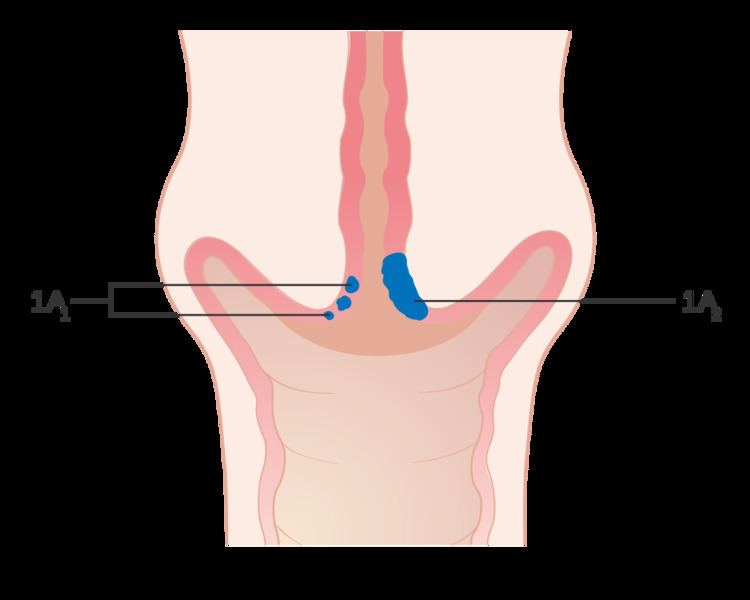 | ||
Cervical cancer staging is the assessment of cervical cancer to decide how far the disease has progressed. Cancer staging generally runs from stage 0, which is pre-cancerous or non-invasive, to stage 4, in which the cancer has spread throughout a significant part of the body. As a general rule, Stage 0 is easily cured and Stage 4 is incurable.
Cervical cancer is staged by the International Federation of Gynecology and Obstetrics (FIGO) staging system, which is based on clinical examination, rather than surgical findings. It allows only the following diagnostic tests to be used in determining the stage: palpation (feeling with the fingers), inspection, colposcopy, endocervical curettage, hysteroscopy, cystoscopy, proctoscopy, intravenous urography, and X-ray examination of the lungs and skeleton, and cervical conization.
Treatment
Treatment is individualised to the patient, her age, reproductive goals, functional status, and access to health care resources.
Treatment according to the FIGO stages of cervical carcinoma:
Stage Ia1: therapeutic conization in young individuals, extrafascial hysterectomy in post reproductive age
Stage Ia2, Ib1, Ib2 and IIa: warthein's radical hysterectomy
Stage IIb, IIIa, IIIb and IVa: Generally chemoradiotherapy (cisplatin is used as radio sensitiser) is used. Surgery is not offered to this group of women because of the significant risk of positive margins and positive nodes.
Stage IVB and recurrent cancer: Palliative therapy (also depends on previously used treatments).
